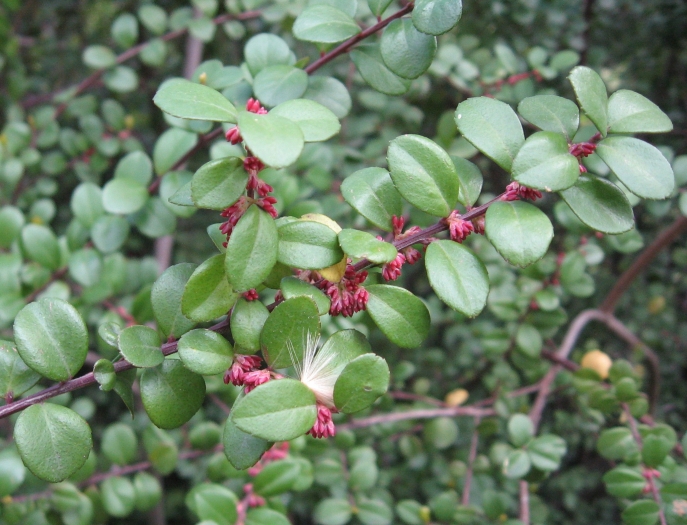African Boxwood
(Myrsine africana)
African Boxwood (Myrsine africana)
/
/

A. Barra
CC BY 3.0
Image By:
A. Barra
Recorded By:
Copyright:
CC BY 3.0
Copyright Notice:
Photo by: A. Barra | License Type: CC BY 3.0 | License URL: https://creativecommons.org/licenses/by/3.0 | Uploader: Cillas | Publisher: Wikimedia Commons | Title: Myrsine_africana.jpg | Notes: {{Information |Description=en: [[Narcissus Valley (Ukraine)|Narcissus Valley]] ([[Ukraine]])ru: [[Долина нарциссов]] ([[Украина]])uk: [[Долина нарцисів]] ([[Україна]]) |Source=self-made |Date=[[May 7]] |

























































Estimated Native Range
Summary
Myrsine africana, commonly known as African Boxwood, is an evergreen shrub native to a variety of habitats including open woodlands, forest edges, and montane regions in Africa and South Asia. It can achieve heights of over 2 meters (6.6 ft) and develops a dense form if pruned or grown in strong sunlight. The leaves are fine-toothed, starting as deep red when young and maturing to glossy, dark green. Cream-colored flowers appear in spring, with male flowers featuring red anthers. Female plants produce small purple berries. The shrub is long-lived and can send up shoots from its root system to form new plants. It propagates easily from seed.
African Boxwood is valued for its dense, attractive foliage and versatility in the landscape. It is used for topiaries and small hedges due to its ease of pruning and shaping. The plant is also known for its potential medicinal uses, as parts of it are used in traditional African soups believed to reduce cholesterol levels. In cultivation, it thrives in full sun to partial shade, requires medium amounts of water, and is adaptable to a range of soil types with varying drainage. However, it is potentially invasive in some regions, so gardeners should check local guidelines before planting.CC BY-SA 4.0
African Boxwood is valued for its dense, attractive foliage and versatility in the landscape. It is used for topiaries and small hedges due to its ease of pruning and shaping. The plant is also known for its potential medicinal uses, as parts of it are used in traditional African soups believed to reduce cholesterol levels. In cultivation, it thrives in full sun to partial shade, requires medium amounts of water, and is adaptable to a range of soil types with varying drainage. However, it is potentially invasive in some regions, so gardeners should check local guidelines before planting.CC BY-SA 4.0
Plant Description
- Plant Type: Shrub
- Height: 4-7 feet
- Width: 3-5 feet
- Growth Rate: Slow
- Flower Color: N/A
- Flowering Season: Spring
- Leaf Retention: Evergreen
Growth Requirements
- Sun: Full Sun
- Water: Medium
- Drainage: Slow, Medium, Fast
Common Uses
Border Plant, Edible*Disclaimer: Easyscape's listed plant edibility is for informational use. Always verify the safety and proper identification of any plant before consumption., Hedges, Low Maintenance, Street Planting
Natural Habitat
Open woodlands, forest edges, and montane regions in Africa and South Asia
Other Names
Common Names: Cape Myrtle, Thakisa, Myrsine, 小葉鐵仔
Scientific Names: , Myrsine africana, Buxus dioica, Myrsine bifaria, Myrsine retusa, Myrsine africana var. acuminata, Myrsine africana var. retusa, Myrsine microphylla, Rhamnus myrtillus, Myrsine bottensis
GBIF Accepted Name: Myrsine africana L.